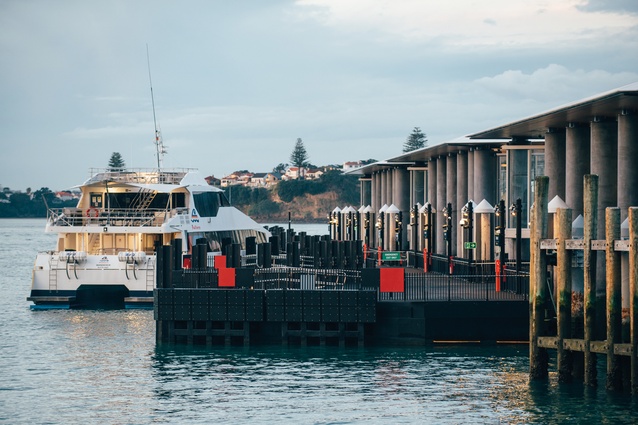Auckland ferry terminal redevelopment opens to the public
In the most significant upgrade to Auckland’s ferry infrastructure since the Edwardian Auckland Ferry Terminal was built in 1912, the Isthmus-designed Te Ngau o Horotiu opened to the public in July. The downtown ferry basin redevelopment project comprises the new six-berth Ferry Landing together with the public downtown waterfront space, Te Wānanga.
“Over the next 10 years, it’s projected the number of people travelling through the ferry terminal will increase by up to 50 per cent from the six million people a year that currently travel through it,” explains Isthmus project lead Andrew Mirams.
Isthmus worked collaboratively with Auckland Transport, Auckland Council, mana whenua partners and key stakeholders to improve accessibility and ensure greater operational flexibility.
Attached to the western edge of Queens Wharf and running alongside The Cloud, the six additional berths have replaced Piers 3 and 4, with passengers now arriving and departing via three six-metre-wide gangways sheltered from the weather by a cantilevered canopy structure and four-metre-high glass walls. The gangways connect to six floating pontoons, which rise and fall with the tide, varying from a 4.4m clearance for the gangway at maximum high tide to 8.5m at maximum low tide.
“The project has been designed to respond to sea-level rise over the next 40 to 50 years and to promote mode shift to more sustainable travel choices,” explains Mirams. Additional ducting under the pontoon will supply electricity to charge the proposed new electric vessels as they replace the current ageing diesel-powered fleet.
The design explores the interface between land and sea and is driven by kaupapa Māori principles of manaakitanga, mīharo and the transformation from Auckland to Tāmaki Makaurau. Details, such as the manaia on the breakwater capping beam, the kaitiaki pile pattern and the etched pattern on the canopy soffit, have been designed and developed by mana whenua-appointed artists.
Te Wānanga, the landscaped space between Quay Street and the sea, was part-funded by the sale and purchase of QE2 Square. Isthmus principal landscape architects Sarah Bishop and Nada Stanish say the coastal shelf project was designed to provide ecologies for both humans and nature. “Marine ecology ropes, viewed through apertures, provide habitat for mussels and kelps, which attract other marine life,” says Bishop. “Native plantings feature species not commonly seen in urban environments and woven nets designed in collaboration with artist Tessa Harris remind us of kelps and seaweeds once prevalent in the location”.










